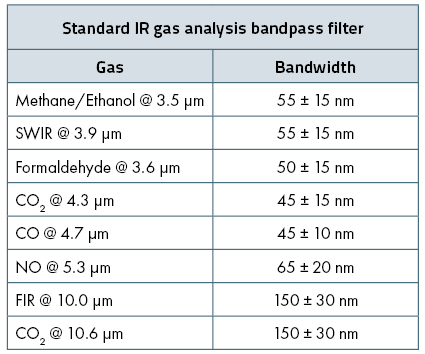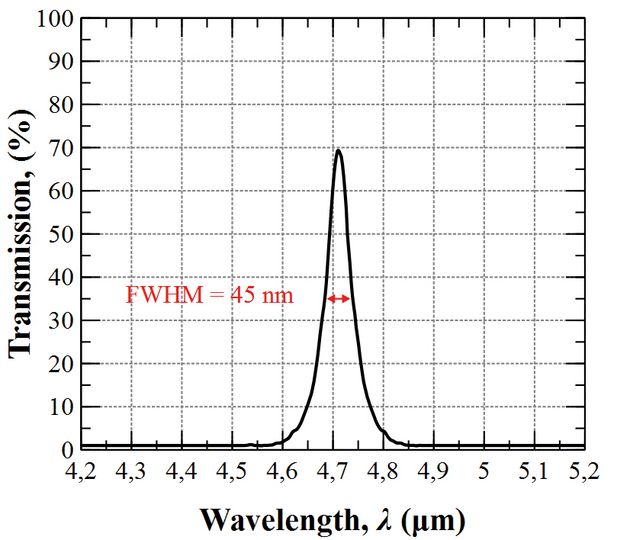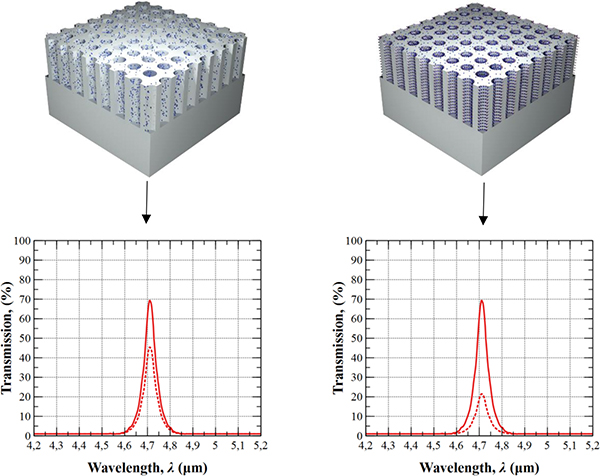Photonic crystals as MWIR filters for new optical sensing applications
Mid-wavelength infrared (MWIR) bandpass filters for the range 3 µm -10 µm are used in a great number of applications such as thermal monitoring, gas sensing, aerospacial or medical technology and others.
The conventional way of manufacturing MWIR filters is by multilayer deposition – either by evaporation or sputtering. The resulting filters are one-dimensional structures consisting of a stack of layers of different materials. Constructive and destructive interference blocks most of the spectrum while allowing the transmission of a narrow band.
In contrast, MapSi Photonics, a spin-off of the University of Barcelona, manufactures all-silicon filters based on photonic crystals (PC). PCs are artificially structured materials that have unique optical properties. In particular, macroporous silicon (MpS), with pore diameters of more than 50 nm and a regular structure, is suitable for many applications. The structures are produced by electrochemical etching in diluted hydrofluoric acid. With this technique the photonic band gap can easily be tuned to the desired wavelength and wavelength-selective filtering can be achieved.
Thus, the filter properties are located in the component itself and are not produced by a thin, relatively sensitive layer. This makes components highly resistant to abrasion and suitable for applications at very high temperatures and/or pressures.
The use of silicon, which is transparent from 1 µm to about 10 µm results in very good optical specifications (see fig. 1, top) at very competitive prices for the entire MWIR range.
MapSi filters are already used for the selective detection of gases whose spectra are close together or partially overlapping. The filter shown in fig. 1, bottom is narrow enough to transmit only the P-branch of CO, thus avoiding cross detection with N2O. Other examples are found in the discrimination between CO2 and N2O, which is especially interesting in medical applications, and in NO2 and water vapor, which is important in the monitoring of polluting gases in industrial processes.
The manufacturing process developed by MapSi also enables, in contrast to conventional coating technology, the cost-effective production of small batches or individual pieces. The technique is also not limited to single band transmission. Depending on the requirements, double band filters (see fig. 2) and other customization is possible
Another feature that makes the filters from MapSi Photonics unique is their porosity. This means they are permeable to liquids and maximize the surface-to-volume ratio. This is of great interest in the field of catalysis or bio-detection, where the use of the filters has already shown improved sensitivity compared to conventional devices. An application example is shown in figure 3. Here the transmission band of the filter coincides with the absorption spectrum of the molecule to be detected. The filter was functionalized with markers that trap these molecules and measured with an NDIR photometer. Due to the better surface-to-volume ratio, the detection sensitivity is significantly increased!
These are only some examples for the use of MapSi filters. Surely you have more exciting application ideas. Please do not hesitate to contact us for a discussion.
Contact
| +49 6157 80710-34 | |
| +49 6157 80710934 | |
| Write e-mail |






